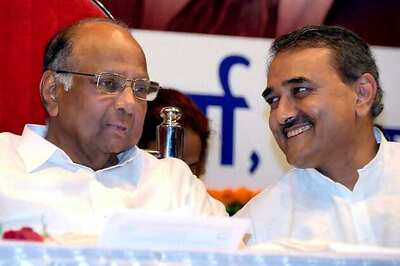
views
New Delhi: A nutritious diet costs twice as much as an energy-only diet, a Save the Children study in Jharkhand has found. A nutrition-based diet costs Rs 194 per day for a family of six as compared to Rs 92 a day for a basic energy-only diet, the Cost of Diet Study’ has found. The study is based on data collected from West Singhbum district of Jharkhand, where the NGO is implementing an integrated health, nutrition and child development programme, supporting the government’s and the NITI Aayog’s Aspirational District Programs.
Nutritious diet in a standard Indian household of six members, factoring their food habits, costs at least INR 194/day as against the basic energy only diet costing INR 92/day, a statement from Save the Children said, quoting the study. It states that a diet that meets a typical household’s nutrient requirements, while taking into consideration the local dietary practices, is two times more expensive than one that meets the household’s energy requirements only. It also analyses the potential contribution of nutrition sensitive programmes on the cost and affordability of a nutritious diet for individuals and households, the statement said about the study.
The study recommended that the cost of food habits nutritious diet (FHAB) should be used as a benchmark to observe changes in the affordability gap to assess whether new social protection initiatives have worked. The study also stated that the availability of nutrient-rich food is not the main barrier for accessing nutritious diets among poor households. Our study found more than 196 different types of food products in West Singhbhum. Promotion of kitchen gardening, forest foods and household food production will improve access to low cost nutritious foods, thereby minimising the cost and affordability gap, the statement said. The statement also quoted Rakesh Ranjan, DDG (Evaluations) and Senior Consultant NITI Aayog, as saying that since coronavirus hit the country, the government has created empowered groups to oversee the post-pandemic recovery and one of the mandates of this group is to garner the support of the private sector and NGOs to overcome the post-pandemic effects. Through this empowered group, we have reached out to the District Administration and asked them to monitor this issue as an indicator and evaluate the gap areas to understand the challenge. We look towards NGOs to support us in identifying this gap area and recommend what more needs to be done to create a behavior change that can enable us overcome the problem of nutrition across the country, with special focus on these aspirational districts, he said. Anindit Roy Chowdhury, Director, Programmes & Policy Impact, Save the Children, said Save the Children is working with Government and communities in addressing the nutritional needs of marginalised families and making sure that affordable, nutritious and indigenous food are promoted and made easily available for children and families in need.
Disclaimer: This post has been auto-published from an agency feed without any modifications to the text and has not been reviewed by an editor




















Comments
0 comment